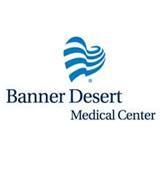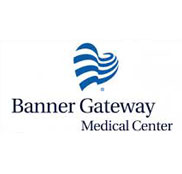Bradycardia
What is bradycardia?
Bradycardia is a heart rate that beats more slowly than is normal. A normal, healthy heart regularly beats between 60 and 100 times per minute. Bradycardia is characterized by a heartbeat of less than 60 times per minute.
What causes bradycardia?
Electrical impulses control the rhythm and rate of your heartbeat. Bradycardia occurs when the normal electrical impulses to your heart are slowed down or entirely blocked, and your blood is forced to circulate more slowly than usual.
Normally, the heart’s rhythm is controlled by our natural pacemaker, the sinus node, situated in your right atrium. With each beat, the sinus node transmits an electrical signal from the atria to the ventricles.
The walls of the ventricles (lower heart chambers) and atria (upper heart chambers) are made entirely of muscle. With each electrical impulse, these muscles tighten. Each tightening is a heartbeat which squeezes closed the chambers and pushes out the blood contained inside them.
Many things can contribute to or cause problems with the heart’s electrical system. Among these are: high blood pressure (hypertension); aging; a heart disorder present at birth (a congenital heart defect); infected heart tissue; damaged heart tissue from heart disease or a heart attack; an underactive thyroid gland; complications of heart surgery; obstructive sleep apnea, the repeated disruption of breathing while sleeping; an imbalance of electrolytes, mineral-related substances required for conducting electrical impulses throughout the body; inflammatory diseases, e.g., rheumatic fever or lupus; hemochromatosis, the accumulation of iron in the organs.
Medications may also be contributing factors, including some drugs for high blood pressure, other heart rhythm disorders, and psychosis.
What are the common symptoms of bradycardia?
For some people, bradycardia causes no symptoms or complications. Those who do encounter symptoms may experience the following: fainting (syncope), dizziness, weakness, and fatigue, shortness of breath, chest pain, confusion or memory problems, and easily tiring during physical activity.
Is bradycardia dangerous?
Especially for young, healthy adults and trained athletes, a resting heart rate slower than 60 beats per minute may be normal. In their case, bradycardia is not considered a health problem. Nonetheless, bradycardia can be a serious problem if the heart doesn’t pump enough oxygen-rich blood to your brain and other parts of your body.
If you feel faint, have difficulty breathing or have chest pain lasting more than a few minutes, get emergency care immediately. Call 911 or your local emergency number. Seek emergency care for anyone experiencing these symptoms.
Is there more than one type of bradycardia?
There are two main types of bradycardia: those caused by problems originating in the sinus node, your natural pacemaker; and those caused by heart block, a disruption of the electrical signals from your upper-heart chambers (atria) to your lower-heart chambers (ventricles.)
How are problems which originate in the sinus node, our natural pacemaker, related to bradycardia?
The sinus node is related to bradycardia in several ways. These include: when the sinus node fires electrical impulses at a rate slower than normal; when it pauses or fails to fire at a regular rate; or fires an electrical impulse which becomes blocked before it can trigger the atria’s contraction. For some individuals, problems with their sinus node may cause alternating slow and fast heart rates (bradycardia-tachycardia syndrome.)
How are problems with heart block related to bradycardia?
First-degree heart block, the least severe type of heart block, happens when all electrical signals from the atria can reach the ventricles successfully, even though the signal is slightly slower than normal. Only rarely does first-degree heart block cause symptoms. In most cases, it requires no treatment as long as there are no other abnormalities in the heart’s electrical signal system present.
When only some electrical signals manage to reach the ventricles successfully, causing a heartbeat that is sometimes irregular or slower, second-degree heart block occurs.
If none of the electrical impulses succeed in travelling from the atria to the ventricles, third-degree (complete) heart block occurs. Fortunately, when this happens, other ventricle tissues act as a backup pacemaker for the ventricles; but this substitution can generate only slower, sometimes unreliable electrical impulses to manage beating of the ventricles.
Bundle branch block is an interruption in the electrical signal system somewhere in the left or right bundle branches, toward the end of the route the electrical signals travel. The severity of bundle branch block depends upon whether or not both branches are affected, if other types of heart block are also contributing to the problem, and the extent of the damage to heart tissue.
What factors increase your risk of bradycardia?
You may have a predisposition for bradycardia if you have high blood pressure (hypertension), high cholesterol, smoke, drink excessively, use illegal drugs, or suffer from psychological stress or anxiety.
How is bradycardia treated?
An implanted pacemaker and other treatments may correct bradycardia and help your heart maintain a more normal rate. If bradycardia is significant enough to cause symptoms, possible complications of the decrease in heart rate may include frequent fainting spells, the inability of your heart to pump enough blood (heart failure), and sudden cardiac arrest or sudden death.











